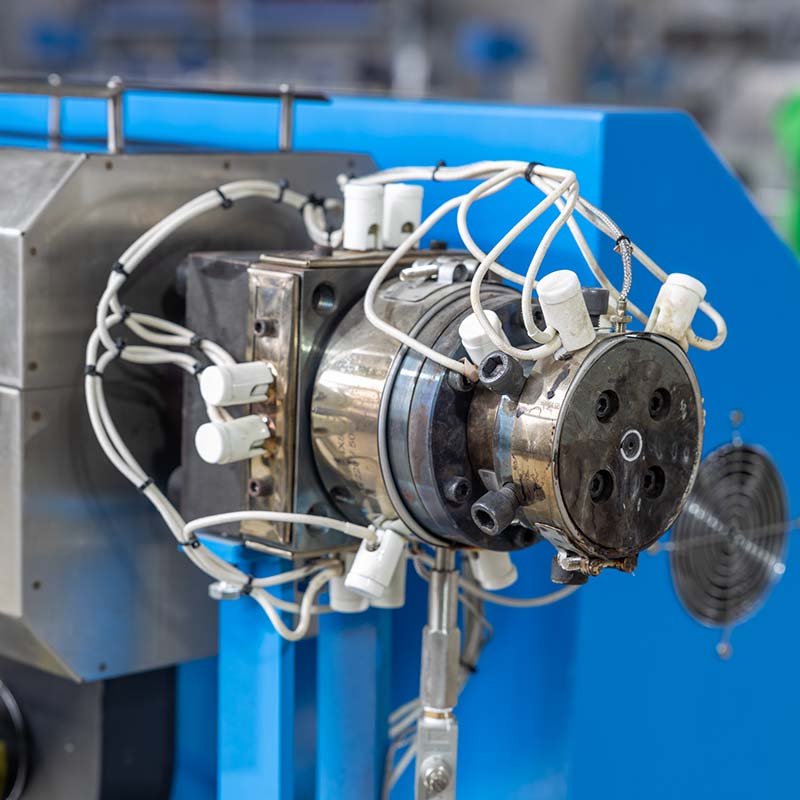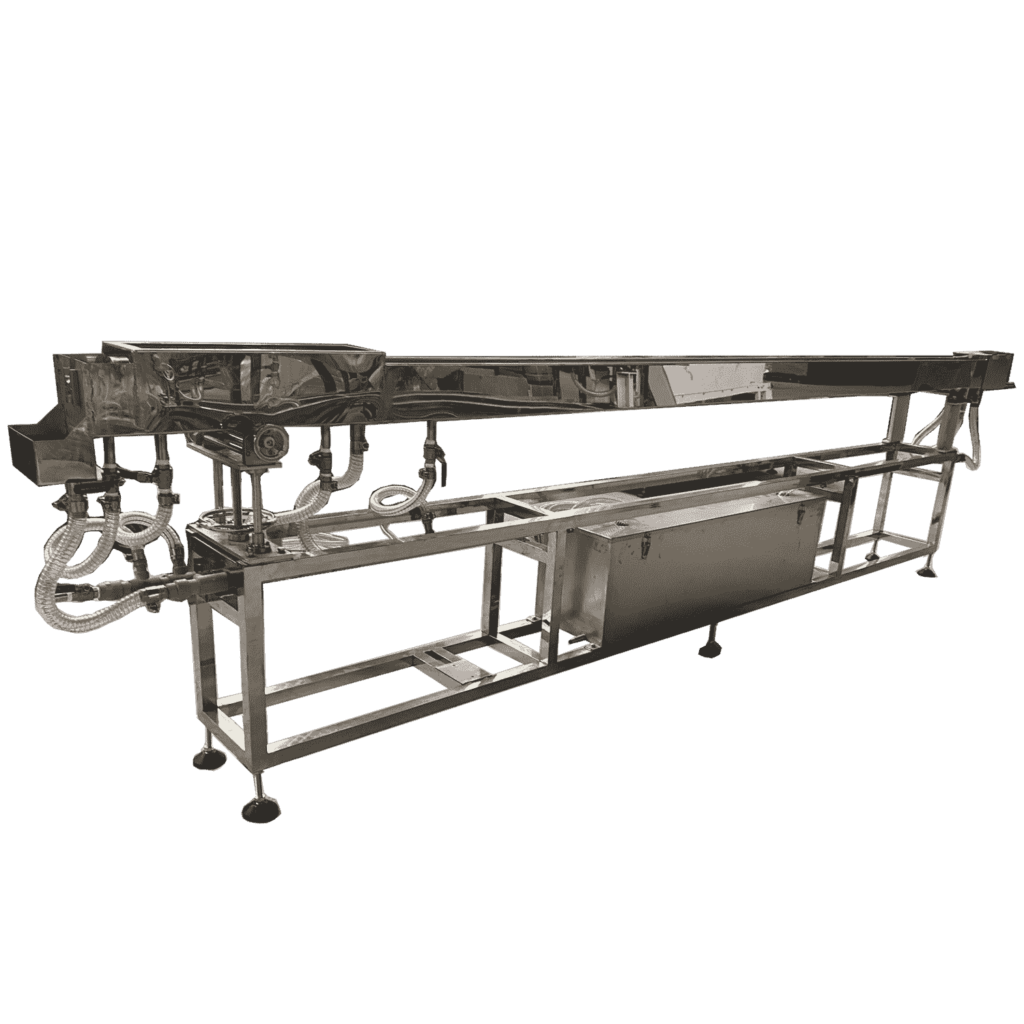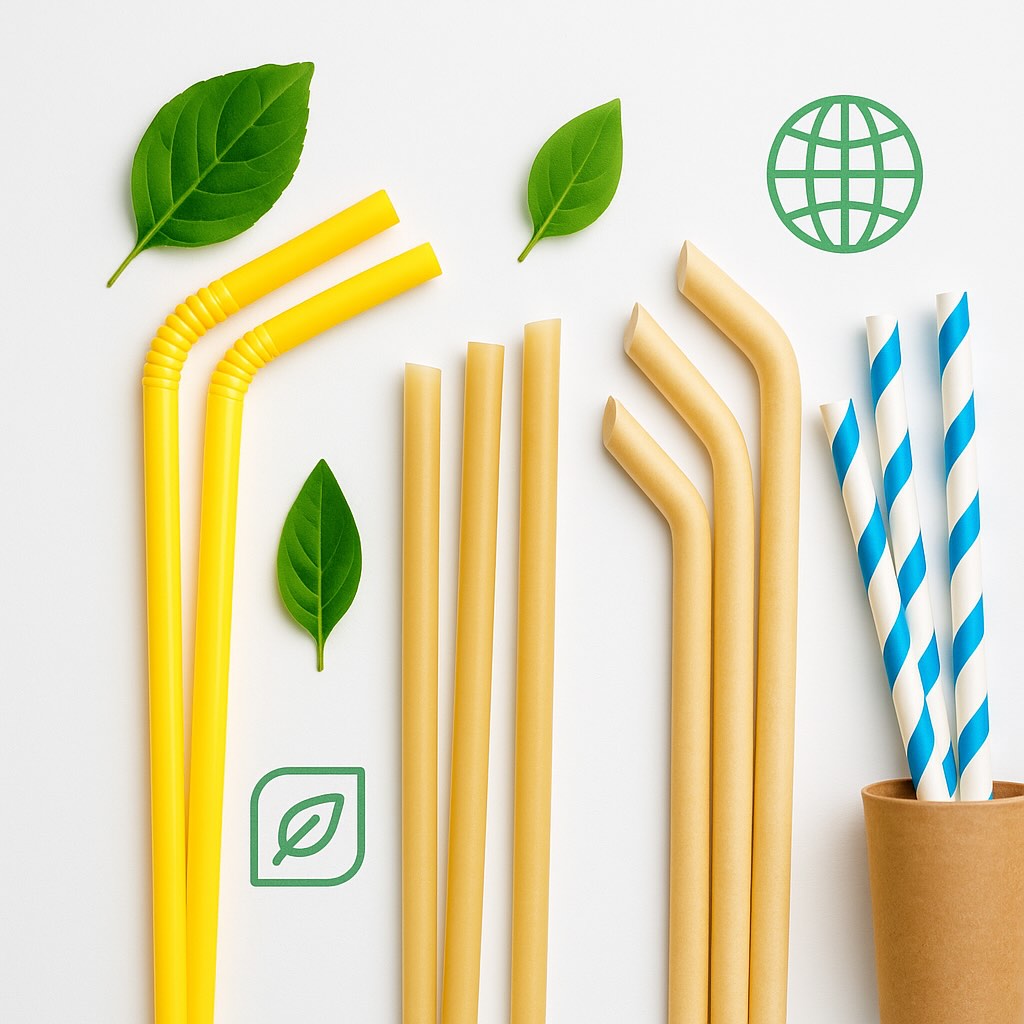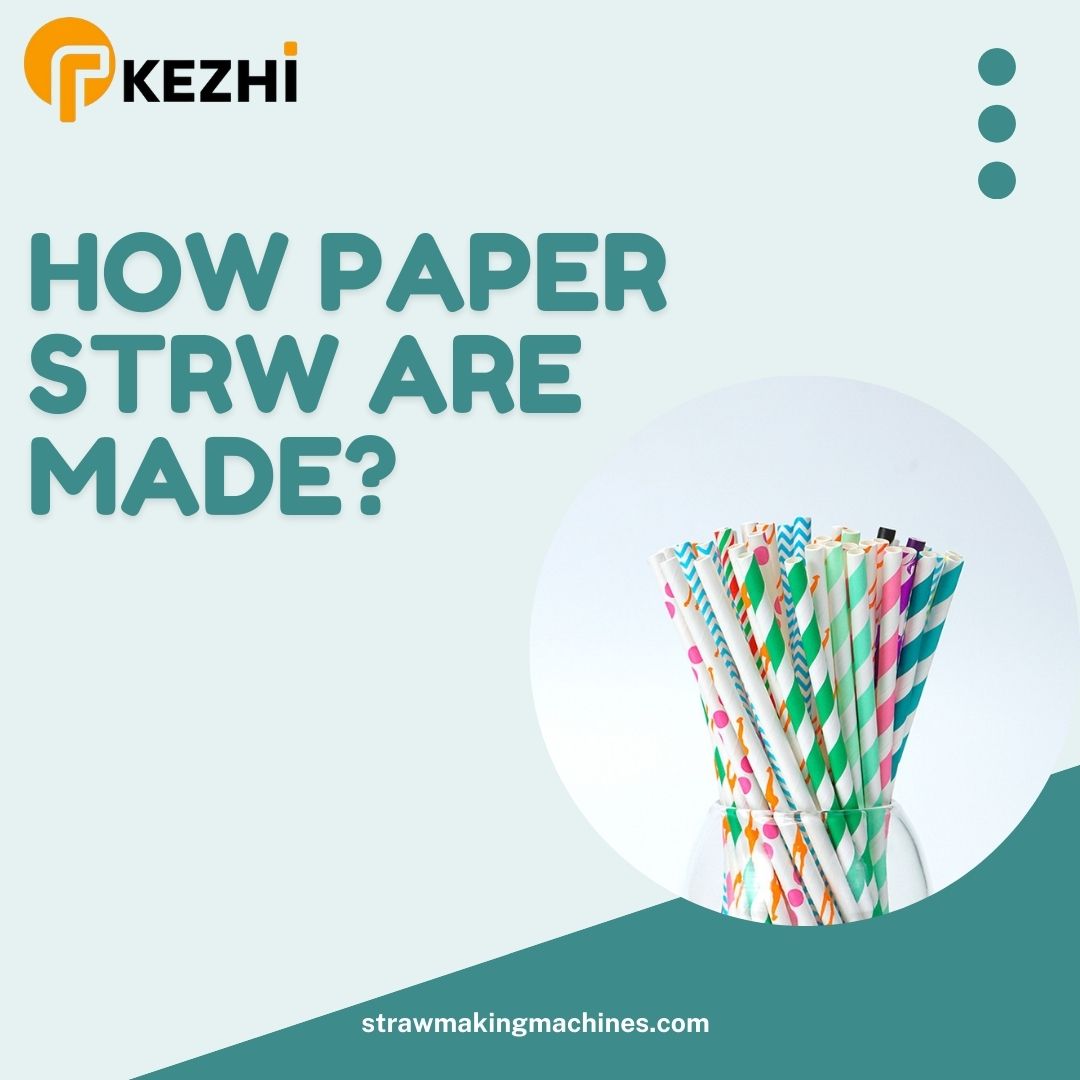- 1. Introduction
- 2. Principle of Plastic Extrusion
- 3. Types of Plastic Straw Making Machines
- 4. Key Components of a Plastic Straw Making Machine
- 5. Factors to Consider When Choosing a Plastic Straw Making Machine
- 6. Cost Considerations
- 7. Maintenance and Durability
- 8. Top Brands and Manufacturers
- 9. Market Trends and Innovations
- 10. Step-by-Step Buying Guide
- 11. Common Mistakes to Avoid
- 12. Conclusion
- 13. FAQs
1. Introduction
The plastic straw industry has been undergoing significant changes over the past few years. In 2024, despite the growing popularity of eco-friendly alternatives, plastic straws still hold a significant market share due to their durability, cost-effectiveness, and versatility. Choosing the right plastic straw making machine is essential for businesses aiming to maintain competitiveness while meeting consumer demand and adhering to regulatory requirements.
Investing in the right machine can greatly impact your production efficiency, product quality, and operational costs. Whether you are a new entrant in the straw manufacturing industry or an established player looking to upgrade your equipment, understanding the various options available is crucial. This guide will help you navigate the complexities of selecting a plastic straw making machine that suits your business needs.
2. Principle of Plastic Extrusion
Plastic extrusion is a manufacturing process used to produce a continuous profile, such as plastic straws. It involves melting raw plastic material and forcing it through a shaped die to create the desired profile. The process begins with feeding plastic pellets into an extruder, where they are melted and mixed. The molten plastic is then pushed through a die head that shapes it into a long, cylindrical tube. This tube is subsequently cooled, pulled through a system to ensure uniform thickness, and finally cut into individual straws.
The key advantage of extrusion is its ability to produce large quantities of straws with consistent dimensions and quality. This process can handle various types of plastic materials, including those used for biodegradable and multi-layered straws, making it a versatile method for straw production.

3. Types of Plastic Straw Making Machines
There are various types of plastic straw making machines available, each designed to cater to different production requirements and preferences.
Main Screw 50mm & 65mm
The main screw size is a critical factor in determining the machine’s production capacity and material handling capability. A 50mm screw is suitable for smaller-scale operations, offering precision in material handling and ideal for standard straw production. On the other hand, a 65mm screw is better suited for larger-scale production, providing higher output and the ability to work with a wider range of materials, including more viscous or multi-layered plastics.
Single Color / Two Colors / Three Colors
The color capability of a straw making machine determines the aesthetic variety of the products it can produce. A single-color machine is the most basic, producing straws in a uniform color. This is sufficient for most standard applications. A two-color machine can produce striped or multi-colored straws, which are more visually appealing and popular in the market. Three-color machines offer even more flexibility, allowing for complex patterns and designs, making them ideal for brands looking to differentiate their products.


4. Key Components of a Plastic Straw Making Machine
Understanding the main components of a plastic straw making machine is essential for assessing its capabilities and suitability for your needs.
אקסטרודר & Die Head

The extruder is the primary component where plastic pellets are melted and mixed. The die head shapes the molten plastic into a continuous tube that forms the straw. The quality and design of the die head are crucial as they determine the final shape and size of the straws. Different die heads are available for producing various straw diameters and types, including straight, bendable, and multi-layered straws.
Cooling System

After extrusion, the hot plastic must be cooled quickly to solidify its shape. This is typically achieved using water or air cooling systems. Efficient cooling systems prevent deformation and ensure that the straws maintain their intended dimensions and structural integrity. The cooling system’s efficiency directly affects the production speed and the quality of the finished product.
Pulling & יחידת חיתוך

Once the plastic tube has been cooled, it is pulled through the system at a controlled speed to ensure consistent thickness. The cutting unit then slices the continuous tube into individual straws of the desired length. Precision in the pulling and cutting processes is vital for maintaining uniformity and minimizing waste.
Collecting System

The collecting system gathers the cut straws and organizes them for packaging. Advanced collecting systems can automatically count, stack, and package the straws, reducing the need for manual handling and improving overall production efficiency.
5. Factors to Consider When Choosing a Plastic Straw Making Machine
When selecting a plastic straw making machine, it’s important to consider several factors to ensure it meets your production needs and operational constraints.
— כושר ייצור
Production capacity is one of the most critical factors to consider. It is typically measured in pieces per hour and varies significantly depending on the machine type and configuration. Assess your daily or monthly production needs and choose a machine that can meet or exceed these requirements without overloading its capacity.
— Speed and Efficiency
The speed of the machine impacts the overall production output and efficiency. Faster machines can produce more straws in less time but may require higher power consumption and more maintenance. Look for machines that offer a good balance between speed and energy efficiency.
— Machine Size and Space Requirements
Consider the physical footprint of the machine and whether it fits within your available production space. Some machines are compact, making them suitable for smaller facilities, while others may require significant space for installation and operation.
— Compatibility with Different Materials
As environmental concerns grow, the ability to produce straws from various materials, including biodegradable options like PLA, is becoming increasingly important. Ensure the machine you choose can handle the types of materials you plan to use, whether traditional plastics or eco-friendly alternatives.
6. Cost Considerations
The cost of a plastic straw making machine can vary widely based on its capabilities, size, and level of automation. It’s essential to consider not just the initial purchase price but also the long-term operating and maintenance costs.
— Initial Investment
Initial costs can range from a few thousand dollars for basic machines to over $200,000 for high-end, fully automated models. Determine your budget and ensure that the machine you choose offers the features and production capacity required for your business.
— Additional Equipment Costs (Air Compressor, Industrial Chiller)
Additional equipment such as air compressors and industrial chillers may be necessary for optimal operation. These can add anywhere from $1,000 to $2,000 to the total investment, depending on the machine’s requirements and the capacity of the additional equipment.
— Operating and Maintenance Costs
Ongoing costs include electricity, labor, and routine maintenance. Advanced machines with more automation may reduce labor costs but could have higher maintenance needs due to their complexity. Calculate the total cost of ownership over several years to get a clear picture of the investment.
7. Maintenance and Durability
A reliable machine should offer minimal downtime and consistent performance over its lifespan. Regular maintenance is key to achieving this.
— Regular Maintenance Needs
Regular maintenance includes checking and replacing worn-out parts, cleaning the extruder and cooling systems, and lubricating moving components. Establish a maintenance schedule to prevent unexpected breakdowns and ensure smooth operation.
— Spare Parts Availability
Opt for a machine from a manufacturer that offers easy access to spare parts. This ensures that you can quickly replace any components that fail, minimizing downtime and production interruptions.
— Longevity and Build Quality
The build quality of the machine affects its durability and lifespan. Machines made from high-quality materials and components are more likely to withstand the rigors of continuous production. Investing in a well-built machine can save money in the long run by reducing the frequency of repairs and replacements.
8. Top Brands and Manufacturers
Choosing a reputable manufacturer is crucial for ensuring the quality and reliability of the machine. Here are some of the top brands in 2024:
— TaiwanJumbo Steel Machinery
Jumbo Steel is known for its high-quality, durable straw making machines. They offer a range of models catering to various production capacities and material requirements, making them a popular choice for both small and large manufacturers.
— Ton Key Industrial Co., Ltd.
Top Key specializes in advanced automation and eco-friendly production solutions. They offer machines with features like multi-color capabilities and compatibility with biodegradable materials, positioning themselves as leaders in sustainable straw manufacturing.
— Chuangfeng Machinery
Chuangfeng is renowned for its innovative designs and cutting-edge technology, They focus on manufacturing high-quality paper straw production line.
Nanjing kezhi is a leading manufacturer of different straw making machines, straw packing machines, straw bending machines and other straw processing machines, with over 15 years in this industry, professional team, KEZHI makes a great effort to the development of straw production.
Comparative Analysis of Different Brands
When comparing brands, consider factors such as machine reliability, customer support, availability of spare parts, and after-sales service. Reading customer reviews and industry reports can also provide valuable insights into each brand’s strengths and weaknesses.
9. Market Trends and Innovations
The plastic straw manufacturing industry is constantly evolving, with new trends and innovations emerging.
— Eco-Friendly Straw Production
With increasing environmental awareness, the demand for eco-friendly straws made from materials like PLA, paper, and bamboo is on the rise. Machines that can handle these materials are becoming more popular and are seen as a key investment for the future.


— Trends in Material Usage
Traditional plastic straws are being supplemented by alternatives that are biodegradable or compostable. Innovations in material science are driving this trend, with new materials offering the same functionality as plastic but with a lower environmental impact.
— Innovative Straw Designs
The market is seeing a rise in demand for innovative designs, such as bendable straws, multi-layered straws, and straws with unique shapes or functionalities. Machines capable of producing these designs are becoming more sought after.


10. Step-by-Step Buying Guide
Follow these steps to ensure you choose the right plastic straw making machine for your needs.
— Identify Your Needs
Start by defining your production goals, including the types of straws you want to produce, the materials you plan to use, and the production capacity you require.
— Assess Production Requirements
Evaluate your daily or monthly production targets and choose a machine that can meet these goals without being over or under-utilized.
— Determine Budget Constraints
Set a realistic budget that includes not only the machine’s purchase price but also additional equipment, installation, and operating costs.
— Research and Compare Machines
Look for machines that match your criteria and compare their features, prices, and reviews. Consider reaching out to manufacturers for detailed product information and quotes.
— Visit Manufacturers or Trade Shows
Whenever possible, visit manufacturers or trade shows to see the machines in operation. This firsthand experience can help you better understand the machine’s capabilities and ask specific questions related to your production needs.
11. Common Mistakes to Avoid
Avoid these common mistakes when selecting a plastic straw making machine:
— Overlooking Material Compatibility
Not all machines can handle every type of plastic or biodegradable material. Ensure that the machine you choose is compatible with the materials you plan to use.
— Ignoring Maintenance Costs
Maintenance costs can add up over time. Consider the frequency and cost of maintenance when evaluating the total cost of ownership for the machine.
— Underestimating Space Requirements
Measure your available space carefully and make sure that the machine, along with any additional equipment, will fit comfortably. Remember to allow space for operators and material handling.
— Choosing Based on Price Alone
While cost is a significant factor, it should not be the sole consideration. Look for a machine that offers a good balance of quality, features, and cost to ensure long-term value.
12. Conclusion
Choosing the right plastic straw making machine is a crucial decision that requires careful consideration of various factors, including production capacity, material compatibility, cost, and technological features. By understanding these elements and following a structured buying process, you can select a machine that will meet your production needs and support your business growth in 2024 and beyond.
13. FAQs
1. What types of straws can be produced? Plastic straw making machines can produce straws from PP (polypropylene). They can also create different types of straws such as single-color, double-color, and multi-color options.
2. Are machines for PP and PLA straws the same? No, they are not the same. The production of PLA straws requires specialized machinery to handle the unique properties of PLA, including higher temperature resistance achieved through secondary crystallization. This necessitates specific design features in the PLA straw-making machine.
3. Can the machine voltage be customized? Yes, manufacturers typically offer services to adjust the machine voltage according to local requirements.
4. What is the production process for making plastic straws? The production process generally involves several key steps:
- Extrusion: Plastic pellets are melted in an extruder and shaped through a die.
- Cooling: The extruded material is cooled to solidify into straws.
- Cutting: The continuous tube is cut into individual straws of desired lengths.
- Packaging: Finished straws are collected and packaged for distribution.
5. Can molds be customized? Yes, molds can be customized to produce straws of different specifications and shapes.
6. What are some key features to look for in a straw making machine? Key features include:
- בקרת טמפרטורה
- Interchangeable dies
- Efficient cooling systems
- Adjustable cutting mechanisms
7. What maintenance is required for these machines? Regular maintenance includes lubrication, cleaning, monitoring temperature settings, and checking for blockages or mechanical issues that could affect production quality.
8. What kind of support is available post-purchase? Most manufacturers provide a warranty period along with after-sales support that includes access to spare parts and technical assistance.
9. What is the maximum production speed of a plastic straw making machine? Production speeds vary by model but typically range from 400 to 1800 pieces per minute with extrusion output between 20 and 100 kg/hour depending on size/type of straw being produced.
10. Can I produce straws in different colors? Yes, many machines allow for single-color, double-color, and multi-color co-extrusion options.
11. How customizable are the molds for producing straws? Molds can be customized to produce straws of different diameters and shapes according to customer specifications.
12. Are PLA straws environmentally friendly? Yes! PLA straws are biodegradable and compostable breaking down into natural components much faster than traditional plastic which can take hundreds of years to decompose
13. How does using a straw making machine contribute to sustainability? By investing in a straw making machine businesses can produce their own biodegradable straws minimizing reliance on single-use plastics
10. How much space is needed for a complete straw production line? A typical production line requires at least 9800mm x 2000mm of space






